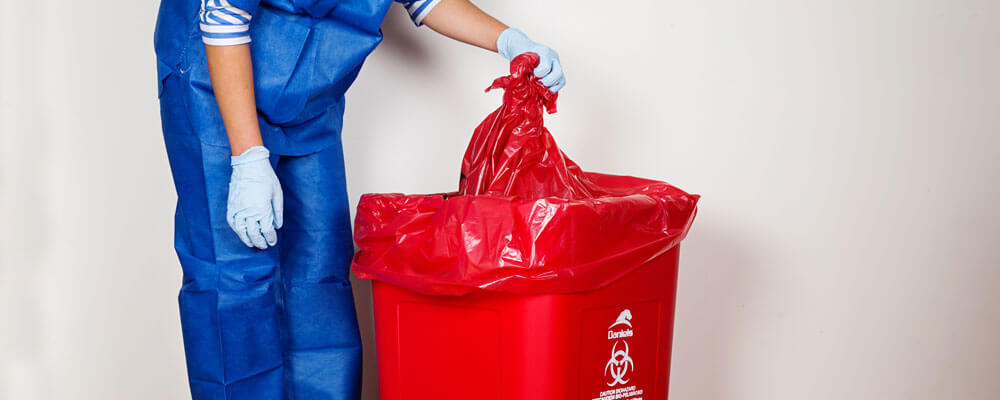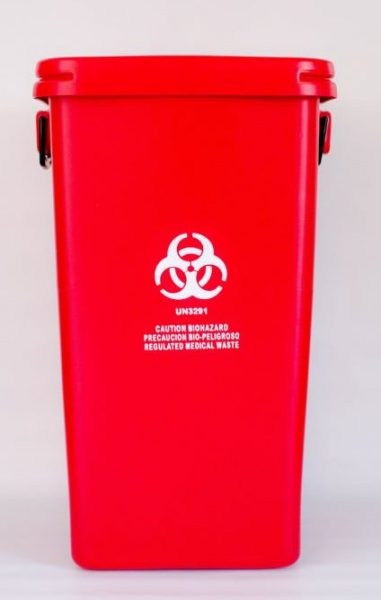Medical Waste Removal Quality: Elevating Safety And Security Standards in Your Center
Medical Waste Removal Quality: Elevating Safety And Security Standards in Your Center
Blog Article
Keep Ahead of Regulations: Expert Guidance on Medical Waste Disposal
In a globe where the health care industry is constantly evolving, it is essential for medical facilities to remain in advance of policies when it comes to the correct disposal of clinical waste. From recognizing the various categories of clinical waste to carrying out the best collection and partition approaches, this conversation will give useful insights and workable tips to help centers remain ahead of laws in the ever-changing landscape of medical waste disposal.
Recognizing Medical Waste Categories
Understanding clinical waste classifications is essential for appropriate disposal and management in health care centers. Clinical waste describes any waste created by healthcare tasks that may position a hazard to public health or the atmosphere. It is crucial to categorize medical waste properly to ensure its secure handling, disposal, therapy, and transportation.
There are a number of groups of clinical waste that healthcare centers need to be accustomed to. One of the most usual categories include contagious waste, pathological waste, sharps waste, pharmaceutical waste, and chemical waste. Each category has particular guidelines and guidelines for its correct management and disposal.
Pathological waste refers to human cells, body organs, or body parts that need special handling and disposal. Pharmaceutical waste consists of run out, extra, or infected medicines that require cautious handling and disposal.
Staying Up-To-Date With Regulatory Changes
Remaining existing with governing adjustments is critical for medical care facilities to guarantee compliance and proper monitoring of clinical waste disposal. medical waste removal near me. With policies constantly evolving, it is vital for medical care facilities to stay current to prevent penalties, penalties, and possible damage to the environment and public wellness
To stay in advance of regulative modifications, healthcare centers should develop a system for tracking and monitoring updates. This can be done by registering for regulative e-newsletters, going to workshops and seminars, and actively getting involved in market associations. Furthermore, facilities must designate a personnel or group responsible for remaining educated and distributing info to pertinent stakeholders.
Regular interaction with regulatory companies is additionally vital. Healthcare centers should establish partnerships with neighborhood, state, and federal firms to ensure they recognize any kind of changes in laws that may affect their waste monitoring practices. This can be done with normal conferences, participation in public comment durations, and aggressive engagement with regulative firms.
Additionally, healthcare centers need to take into consideration partnering with waste management firms that specialize in clinical waste disposal (medical waste disposal services with WasteX). These companies are usually fluent in the current guidelines and can supply advice and support to make certain compliance
Carrying Out Correct Collection and Partition Methods
To properly take care of clinical garbage disposal, medical care centers must establish appropriate collection and segregation techniques in accordance with regulative guidelines. Executing these techniques makes sure the risk-free handling and disposal of potentially dangerous materials, protects the environment, and minimizes the risk of infections and injuries to healthcare workers and the basic public.
Appropriate collection and partition techniques involve making use of marked containers and classifying systems. Medical care centers must offer clearly classified containers for various types of medical waste, such as sharps, infectious waste, pharmaceutical waste, and non-hazardous waste. These containers should be color-coded and plainly significant to avoid confusion and promote easy recognition.
Furthermore, healthcare centers must train their staff on the correct treatments for gathering and segregating clinical waste. This includes enlightening them on the various kinds of waste, the ideal containers to utilize, and the importance of adhering to policies and guidelines. Routine training sessions and correspondence course ought to be performed to make sure that employee stay current on finest techniques.
Moreover, healthcare centers should develop a system for normal collection and disposal of medical waste. This might include partnering with qualified waste administration firms that specialize in clinical garbage disposal. These business will certainly ensure that the collected waste is moved and thrown away in compliance with regulatory demands.
Picking the Right Disposal Methods

Incineration is one of the most effective and usual approaches for dealing with specific types of medical waste, such as pathological waste and sharps. It includes the controlled burning of waste at high temperature levels, lowering it to ash. Nonetheless, incineration can launch harmful pollutants into the air and add to air pollution.

Other disposal approaches consist of chemical therapy, microwave treatment, and landfilling. Chemical therapy involves the usage of chemicals to sanitize and neutralize the waste. Microwave treatment makes use of microwave energy go to warm and disinfect the waste. Landfilling entails burying the waste in an assigned landfill location (medical waste disposal services with WasteX). Nonetheless, landfilling should be the last hope because of the possible danger of contamination to dirt and groundwater.
Making Certain Conformity Via Documents and Training
After meticulously considering the suitable disposal techniques for medical waste, health care facilities should guarantee compliance with regulations and minimize environmental impact by implementing effective documents and training treatments. This step is crucial in maintaining a lasting and risk-free atmosphere for both healthcare employees and the public.

Medical care employees that deal with medical waste ought to get suitable training on waste segregation, dealing with, and disposal procedures. By supplying detailed training, medical care centers can equip their personnel to make informed decisions and minimize the danger of incorrect waste disposal.
Final Thought
To conclude, staying in advance of laws in medical waste disposal is critical for medical care centers. medical waste removal service. Comprehending the different groups of clinical waste, staying upgraded with regulative adjustments, applying appropriate collection and segregation methods, picking the suitable disposal approaches, and making certain compliance through documents and training are all crucial actions. By adhering to these guidelines, healthcare companies can efficiently manage and get rid of of clinical waste in a risk-free and responsible fashion
From comprehending the different groups of clinical waste to carrying out the right collection and partition methods, this conversation will supply actionable ideas and valuable understandings to help facilities remain ahead of laws in the ever-changing landscape of medical waste disposal. - medical waste disposal services with WasteX
The most usual categories include transmittable waste, pathological waste, sharps waste, pharmaceutical Visit Your URL waste, and chemical waste. Medical care facilities should offer clearly identified containers for different types of medical waste, such as sharps, transmittable waste, pharmaceutical waste, and non-hazardous waste. Medical care centers need to develop a comprehensive system to record and track all aspects of medical waste disposal, including types of waste generated, quantities, and disposal methods used. Medical care employees that manage clinical waste must get proper training on waste segregation, dealing with, and disposal procedures.
Report this page